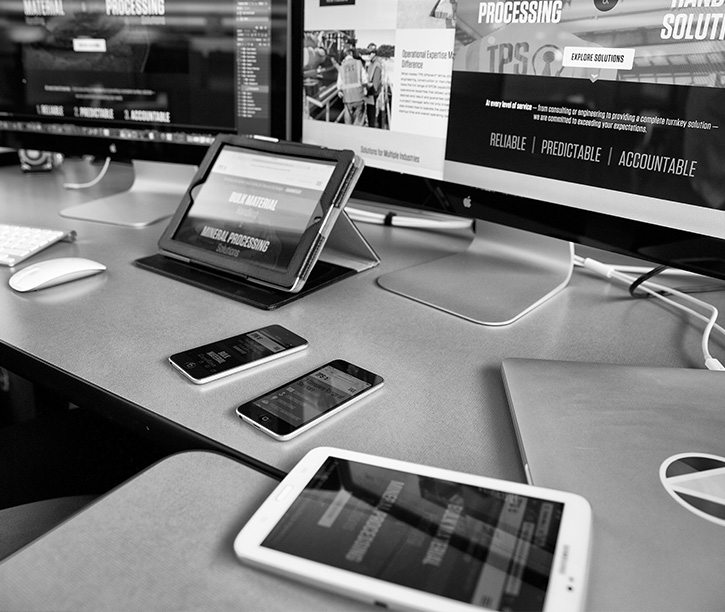Website Discovery
All too often, clients are disappointed with the final result of their new website, feeling it doesn't capture the essence of their company, or communicate the value of their products and services.

The only way to avoid this problem is by working with a web design company with a rock-solid discovery process. The initial discovery phase of a project is where the developer gains an understanding of the client's key objectives.
Critical Discovery Information
Your web design company needs much more than a superficial understanding of your business and industry to create a high-impact website. A thorough discovery process includes discussion of the following:
- Detailed company history, including key developments and when they occurred
- Contact information specifics, including addresses and phone numbers of all locations
- Strategic objectives of the new website, prioritized as clearly as possible
- Major dislikes about the current website, in terms of color, content, message and functionality
- Major likes about the current website, in terms of color, content, message and functionality
- Why major likes and dislikes matter (to help the client and web design company sort out real issues versus ones merely a matter of personal preference)
- How products and services are organized for customers (product groups, service categories, etc.)
- The priority of products and services in terms of profitability
- The priority of products and services in terms of popularity
- The positioning of products and services: specialty items, commodities, one-time purchases, repeat purchases, etc.
- Where and how the company fits in the distribution chain
- A complete description of customer segments, including geographic location, age, gender, company role (for B2B), etc. for each
- Details about key buying motivators for each segment
- Details about key buying obstacles for each segment
- Detailed description of the sales cycle
- Detailed information about the sales process, including how leads are generated, how products are pitched, etc.
- Details about company/product/service credibility, including testimonials, recognizable customers, certifications, awards, customer retention rate, etc.
- Information about major competitors, their relative strengths and weaknesses, and how the company is positioned against them
- Preferences for website design, including color, imagery style, communication style, mobile experience, key content segments, key messaging points, etc.
- Examples of other websites that company leadership views as benchmarks for quality — and why
- Technical information, including DNS hosting, contact information, domain names pointing to the website, what tracking code will be implemented, etc.
Without this information, the web design company's creative and development team are forced to guess about which product benefits to highlight, how best to capture products and product benefits in imagery, which credibility points carry weight with prospects, and a hundred other website elements that make the difference between a website that attracts business and one that puts prospects to sleep.
Request A Free Consultation




Obtaining Client Inputs
A second very important part of the discovery phase is collecting the appropriate client inputs to create a truly compelling, original and visually appealing website. Without the following information, the imagery of the website will be low quality and generic; and content will be off the mark. Key items a client should provide the web design company include:
- Logo file
- Brand standards guide
- Professional photography (company interior and exterior, head shots, products, applications, etc.)
- Credibility graphics (e.g., industry association logos, award badges, large client logos, etc.)
- Content inputs — key messaging inputs for each page
- Videos relating to the company, products and services
- PDF files relating to the company, products and services
- Sales collateral (brochures, slide presentations, white papers, etc.)
Relationship Building
Because large scale website projects last several months and involve a number of people on the client and agency sides, laying the groundwork for a strong working relationship is another key element of the discovery phase. Discovery and project kickoff meetings should involve some or all of the key players, giving everyone an opportunity to connect a face or at least a voice with a name. Discovery phase meetings should allow client project team members to raise questions and voice concerns, so that the project gets off on the right foot with everyone's expectations aligned. Straight North's discovery phase always includes a formal kick-off meeting where all issues are on the table for discussion.
Keyword Research
Keyword research is the bridge between discovery and project execution for any website to be supported by SEO immediately or potentially in the future. Keyword research uses the information collected in discovery to identify strategically important keywords that a company's customers and prospects will use to find its products and services. Failing to create a keyword strategy and to weave it into the website's structure and content causes a company's website to be virtually invisible on Google — thereby passing up great opportunities for generating online sales leads.
At this point, it should be clear that clients get out of a new website what they put into it. Taking shortcuts on a website project is never a good idea, and a good web design company will pretty much force its clients to participate actively in the discovery phase. With a great discovery phase, when your new website launches, everyone in the company from the CEO down will respond with cheers, not jeers.
Need help with your website project? Give us a call today at 855-779-7675 or request a quote.


